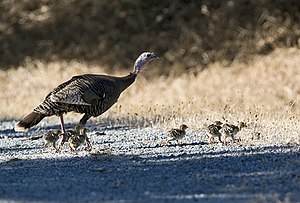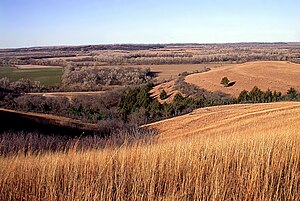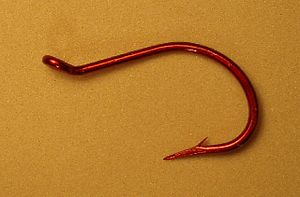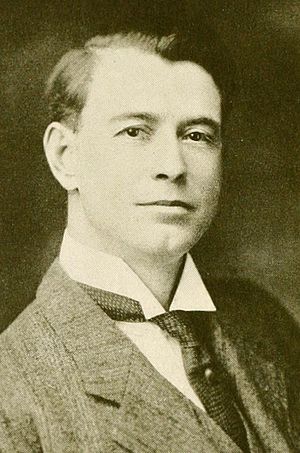2012 marks 75th anniversary of landmark legislation that brought wildlife back from the brink
PRATT — Hunters and anglers pay for wildlife management in Kansas. If you’ve heard that before, you were probably talking to an employee of the Kansas Department of Wildlife, Parks and Tourism (KDWPT). There is a popular myth, probably because KDWPT is a state agency, that general taxes pay for its programs. Actually, State General Funds make up less than 7 percent of the agency’s budget, and that money is dedicated to state park programs and administration. The bulk of KDWPT’s budget is derived from the sale of licenses and permits, and the rest of the budget used for wildlife and fisheries management comes from federal funding — a self-imposed excise tax on hunting and fishing equipment lobbied for by hunters and anglers themselves.
This funding can be traced back to the beginning of modern wildlife management. In 1900, wildlife populations in the U.S. were dwindling to dangerously low numbers, and some species were near extinction. Wildlife management, while desired, wasn’t funded by Congress or the states. And even though there were Kansas laws on the books designed to protect game populations, there wasn’t funding to pay for enforcement.
In the 1930s, hunters and the hunting and shooting industry urged Congress to act before it was too late for many wildlife species. Congress acted by extending the life of a 10 percent tax on ammunition and firearms used for sport hunting and earmarked the funds to be distributed to the states for wildlife restoration. On Sept. 2, 1937, President Franklin D. Roosevelt signed the Federal Aid in Wildlife Restoration Act, now called the Pittman-Robertson Wildlife Restoration Act (P-R) after its principal sponsors, Sen. Key Pittman of Nevada and Rep. A. Willis Robertson of Virginia.
The money has been distributed to the states based on the number of hunting licenses they sell pay for wildlife-related programs on a 75-25-percent match. State license and permit fees make up the states’ 25 percent. Since P-R was signed into law, more than $2 billion in excise taxes has been sent to the states, which matched $500 million for wildlife restoration.
How is the money spent? Nationwide, more than 62 percent is used to buy, develop, maintain, and operate wildlife management areas. Four million acres have been purchased, and nearly 40 million acres have been managed for wildlife under agreements with private landowners. Twenty-six percent of the funding is used for surveys and research, two efforts extremely important to the evolution of modern wildlife management programs. But it’s accurately called the Wildlife Restoration Act. Since it was signed, historical wildlife population comebacks have been witnessed again and again.
Great comeback stories abound. In 1900, numbers of white-tailed deer, wild turkey, and pronghorn, once abundant, had dwindled dramatically in North America, and all three species were extirpated from Kansas. Today, whitetails and wild turkeys provide great hunting statewide, and a strong, huntable population of pronghorns — a species unique to the continent — thrives in western Kansas. Whooping cranes, while still endangered, have grown from fewer than 40 to more than 400. And the once endangered national symbol — the bald eagle — has recovered so dramatically that it has been removed from the endangered species list.
Following in the footsteps of Pittman and Robertson, Sen. Edwin Johnson of Colorado and Rep. John Dingell Sr. of Michigan sponsored the Sport fish Restoration Act in 1950. Commonly called the Dingell-Johnson, or D-J, Act, this legislation was modeled after the P-R Act, bringing revenue to sport fish conservation efforts from excise taxes on sport fishing equipment and import duties on fishing tackle, yachts, and pleasure craft, plus a portion of the gasoline fuel tax attributable to small engines and motorboats. That money is distributed to the states based on fishing license sales and also requires a state 25-percent match. The funds are used for fisheries management programs and boat access.
This year marks the 75th anniversary of the Wildlife and Sport Fish Restoration (WSFR) program (now considered two parts of a common program). Since they began, nearly $14 billion has been generated and apportioned back to the states. Recipient fish and wildlife agencies have matched these program funds with more than $3.4 billion. Grants to the states from the Sport Fish Restoration program can be used for fishery projects, boating access, and aquatic education. Money from the Wildlife Restoration Program is used for projects to restore, conserve, manage and enhance wild birds and mammals and their habitat, as well as projects that provide public use and access to wildlife resources, hunter education, and development and management of shooting ranges.
Through the WSFR, Kansas receives approximately $15 million annually. Last year, WSFR funds helped the department purchase land at the Parsons Ammunitions Plant that will be managed for public hunting, and Fancy Creek Shooting Range at Tuttle Creek State Park was enhanced. Popular programs such as Walk-In Hunting Access, Fishing Impoundments and Stream Habitat, and Community Fisheries Assistance Program would not have been possible without WSFR.
WSFR leverages license and permit revenues and allows the department to provide direct benefits to wildlife, as well as anglers, hunters, and boaters. And while the programs funds are usually specific to game animals and sport fish, they benefit all wildlife and fish. Because so few of our wildlife species are hunted or fished, habitat enhancement efforts benefit many more nongame species.
If you enjoy wildlife in Kansas, you can thank hunters, anglers, and the Wildlife and Sport Fish Restoration Program. All of our wildlife resources and most of our outdoor recreation have benefitted from this far-reaching program that was started 75 years ago by some visionary people.













